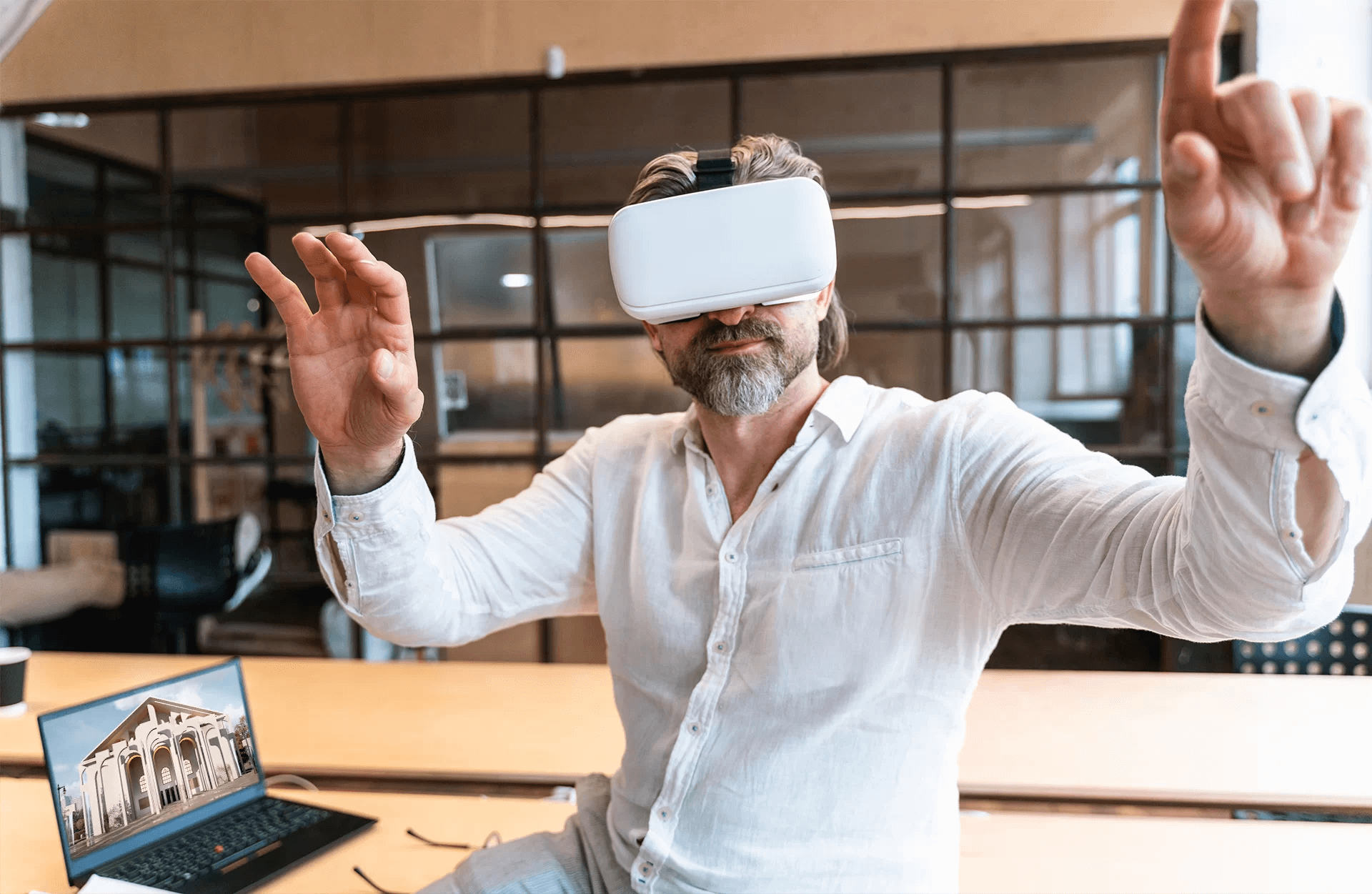The technological landscape evolves rapidly, disrupting architecture and real estate industries. Augmented reality and virtual reality are one of the latest and most amazing transformative tools. For architects and realty experts, their use is quite new. But these technologies definitely deserve attention as they can make all the difference. They allow us to completely reshape the way we experience and interact with presented designs. So, how exactly do these technologies work? And what is the difference between augmented reality and virtual reality?
Our 3D visualization company always keeps up with cutting-edge technological trends. This way, we ensure our clients can present their works in the most impressive way. Wondering how to harness the power of AR and VR for your projects? And what is the difference between these tools? Read on!
#1. What Is Augmented Reality?
Augmented reality integrates virtual elements into the real-world environment. It does so by overlaying computer-generated objects onto a user’s vision of the physical world. AR technology uses various devices such as smartphones, tablets, and headsets. They capture the environment with their cameras and superimpose digital objects onto it. That allows viewers to see virtual objects as if they were right before their eyes. What’s more, one can rotate those items to examine them from every angle as well as zoom in and out.
#2. What Is Virtual Reality?
So, what’s the difference between augmented reality and virtual reality among real estate rendering services? Unlike AR, which adds digital elements to the existing environment, VR transports users to a whole digitally created world. That world can be based entirely on the imagination of the creator or recreate some real-life locations.
Virtual reality also allows users to interact with the simulation. In VR, one can navigate through space and manipulate objects. On top of that, by using virtual reality, teams can collaborate efficiently in real time.
#3. Similarity and Difference Between Augmented Reality and Virtual Reality

Both AR and VR aim to enhance user experiences. But as you can see, there is a difference in their approach and level of immersion.
Augmented reality enriches the real world with virtual elements. In contrast, VR immerses users in a completely virtual environment. So, AR maintains a connection to “real” reality while VR creates a simulated reality that users can explore and interact with.
Another difference between augmented reality and virtual reality is the equipment needed. It’s possible to use AR with commonplace smartphones or tablets. This makes the technology more accessible. But with VR, you can’t do without a special headset.
Both solutions provide unique benefits to the architectural and real estate industries. Let’s consider them in more detail.
#4. Uses in Architecture and Real Estate

Augmented reality and virtual reality offer a range of applications within these fields. They might come in handy at all steps of the workflow.
At the design stage, VR allows for streamlining collaboration. Architects can visualize, review, and modify projects in a shared ultra-realistic digital environment. Also, a VR simulation can provide access to detailed information about specific architectural elements.
When it comes to presentations that use 3D rendering for architects, both augmented reality and virtual reality shine.
- With AR, architects and developers can visualize their projects in the existing environments. So, for example, you can showcase a future building in the exact location where it will be constructed. Or, you can show a mini version of your project right in a client’s office. All in all, this technology facilitates understanding of design and decision-making.
- With virtual reality, you can create a stunningly immersive 3D architecture presentation. Your clients and stakeholders can explore and navigate the future space as if they were actually there. The immersion provides a deeper understanding of spatial relationships, materials, lighting, and ambiance of the design. This way, it leads to more informed decisions. Not to mention a lasting experience that such a presentation leaves.
On top of that, augmented reality offers the potential for on-site help during the construction process. As we mentioned, it can help visualize a project in its intended location before works begin. That can be useful in making smart design decisions early on, potentially reducing the need for costly changes later.
Get your project estimated in just 1 hour - fill out this brief!
So, the main difference between augmented reality and virtual reality lies in the immersion scale. But their similarities are more important. Both technologies offer unique opportunities for architects and developers. Design, presentation, and even construction stages can now be easier and more efficient.
Looking for 3D visualization services to leverage the latest technological trends in your work? Contact us at ArchiCGI to get stellar solutions at a reasonable cost!

Stacey Mur
Content Writer, Copywriter
Stacey is a content writer and a CG artist. Outside of work, Stacey enjoys musicals, Star Wars, and art talk. A proud Corgi parent.



